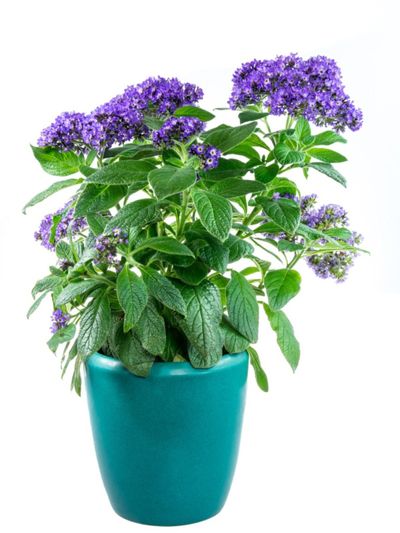Let’s take a look at the conditions you need for growing heliotrope inside.
Indoor Heliotrope Care
Give your heliotrope houseplants as much sun as you can indoors. In cooler climates, give your plant the sunniest window possible. If you live in a hotter climate, you may want to protect your heliotrope indoors from hot mid-day sun. If your light is not sufficient, your plant will become leggy. If this happens, prune it back and give it more light, and you can even use a grow light if you don’t have sufficiently sunny windows. Try to keep your heliotrope houseplants evenly moist. You should never allow your plants to dry out completely, nor should you keep it too wet. To achieve this indoors, mix in a generous amount of perlite into your potting mix. This will help attain a moist potting mix, while increasing drainage, and without keeping your plant wet. You can keep heliotrope indoors year-round, but your plant will definitely benefit from being outdoors during warmer months. You can either bring your potted plant indoors before it gets too cold, or you can take cuttings.
Propagating Heliotrope
Take cuttings of your plant in late summer if you don’t want to dig up your plants or move any large plants indoors. Simply cut a piece of stem that is about 4 or 5 inches (10 or 12.7 cm.) long, and be sure to cut the stem right under where a leaf is present. Remove the leaves from the bottom part of the cutting, dip the end in rooting hormone, and insert it into a pot of soil to which you’ve added some perlite. Keep your cuttings moist and increase humidity if you can. Keep your plant in a bright place, but out of any direct sun until it is rooted. Once your plant is rooted, you can increase the exposure to sunshine. Try and keep your rooted plants in a sunny, but cooler location in the winter. If you can provide cooler nights for your heliotrope indoors, with temperatures in the 50-55F range (10-13C), this would be ideal.
Pinching and Feeding
If you want bushier plants, you can pinch off the growing tips of your stems. This is ideally done in the spring after the first growth occurs, but before your plant sets flower buds. Heliotropes are heavy feeders, so make sure to feed regularly throughout the growing season. Avoid high nitrogen fertilizers as these can cause too much foliage and fewer flowers. A well balanced fertilizer (for example, 10-10-10) will work well. To keep your heliotrope houseplants in good shape, always remove spent flowers and any dead leaves. This not only keeps the plant more vigorous, but it also helps to prevent disease and pests.
